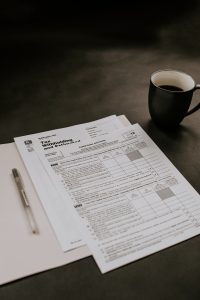Forex trading is a complex process that involves a lot of different aspects. One of the most important aspects of forex trading is reporting your trades to the IRS. This is because forex trading is considered a taxable event, and you will need to report your profits and losses to the IRS in order to comply with tax laws. In this article, we will explore how forex trades are reported to the IRS, what information you need to provide, and some tips for making the process easier.
What is Forex Trading?
Before we dive into the specifics of how forex trades are reported to the IRS, it’s important to understand what forex trading is. Forex trading, or foreign exchange trading, is the act of buying and selling currencies on the foreign exchange market. The value of currencies fluctuates constantly, and forex traders aim to profit from these fluctuations by buying low and selling high.
Forex trading can be done through a variety of different platforms and brokers, and it can be a very lucrative way to invest your money. However, it’s also important to be aware of the tax implications of forex trading, as failing to report your profits and losses to the IRS can result in penalties and fines.
How are Forex Trades Reported to the IRS?
When it comes to reporting forex trades to the IRS, there are a few different things you need to keep in mind. First and foremost, any profits you make from forex trading are considered taxable income. This means that you will need to report your profits on your tax return, just like you would with any other type of income.
In order to report your forex trades to the IRS, you will need to keep track of a few different pieces of information. This includes:
– The date you entered the trade
– The date you exited the trade
– The currency pair you traded
– The amount of the trade
– The profit or loss you made on the trade
You will need to keep track of this information for every trade you make, as it will be used to calculate your overall profit or loss for the year.
Once you have this information, you will need to report your forex profits and losses on your tax return. This is typically done on Schedule D (Form 1040), which is used to report capital gains and losses. You will need to include all of the information you gathered about your trades, as well as any other capital gains or losses you incurred throughout the year.
Tips for Reporting Forex Trades to the IRS
Reporting your forex trades to the IRS can be a daunting task, but there are a few things you can do to make the process easier. Here are some tips to keep in mind:
– Keep detailed records: As we mentioned earlier, you will need to keep track of a lot of different information in order to report your forex trades to the IRS. Make sure you keep detailed records of every trade you make, including the date, amount, currency pair, and profit or loss.
– Use accounting software: If you’re having trouble keeping track of all of your trades, consider using accounting software to help you. There are a variety of different software options available that can help you keep track of your trades and calculate your profits and losses.
– Work with a tax professional: If you’re really struggling to figure out how to report your forex trades to the IRS, consider working with a tax professional. They can help you understand the tax laws surrounding forex trading, and can help you make sure you’re reporting everything correctly.
– Don’t try to hide your profits: Some forex traders may be tempted to try to hide their profits in order to avoid paying taxes. However, this is illegal and can result in serious penalties and fines. Always make sure you report your profits and losses accurately.
Conclusion
Reporting your forex trades to the IRS can be a complicated process, but it’s important to do it correctly in order to comply with tax laws. Make sure you keep detailed records of all of your trades, and report your profits and losses on your tax return using Schedule D (Form 1040). If you’re having trouble, consider working with a tax professional to help you navigate the process.





